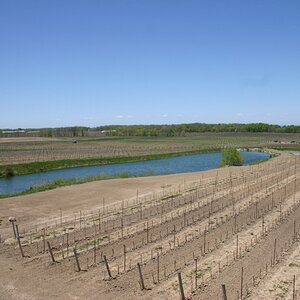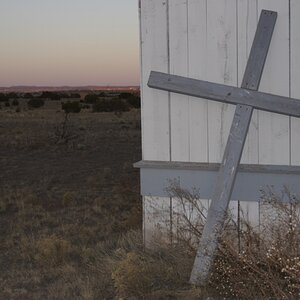uplander
TPF Noob!
- Joined
- Mar 22, 2008
- Messages
- 536
- Reaction score
- 0
- Location
- S.E. WI.
- Can others edit my Photos
- Photos OK to edit
I got a Canon EF 24-70L f/2.8 yesterday and was mildly surprised when I noticed that when turning the zooming ring from 70mm down 24mm the lens barrel extended. To honest I was quite confused to say the least at first because all the other lenses that I have, the barrel extends when zooming in the other direction (retracted at the wide end and extended at the long end).
There must be a lot of engineer in because I can't let this go as "Okay that's how it is". My mind needs to know why? It's never been enough for me to know how to do something, I've always needed to why it works that way. An example of this is could be, lets use unsharp mask in photoshop for instance. I know if I adjust the sliders for amount, radius and threshold, I can manipulate the image. But if I understand what each slider does and why and how it effects the image, I can better use this function to get the desired results.
I getting off on a tangent here, so back to lenses:er:. I started to think why? Does this have to do with this lens being a constant aperture?
I grab my 70-200 f/2.8 which doesn't extend externally but does so inside the barrel and aha! This lens operates as does the 24-70. So now my mind is thinking, these lenses operate this way because that is how they can keep a constant large aperture.
So now I take my Tokina 11-16 f/2.8 and look to see if I can see the same phenomenon. Hmm, I can't really say so visually.
So, is there anyone out there who can explain why these lenses work this way? My curiosity gnaws at me!
There must be a lot of engineer in because I can't let this go as "Okay that's how it is". My mind needs to know why? It's never been enough for me to know how to do something, I've always needed to why it works that way. An example of this is could be, lets use unsharp mask in photoshop for instance. I know if I adjust the sliders for amount, radius and threshold, I can manipulate the image. But if I understand what each slider does and why and how it effects the image, I can better use this function to get the desired results.
I getting off on a tangent here, so back to lenses:er:. I started to think why? Does this have to do with this lens being a constant aperture?
I grab my 70-200 f/2.8 which doesn't extend externally but does so inside the barrel and aha! This lens operates as does the 24-70. So now my mind is thinking, these lenses operate this way because that is how they can keep a constant large aperture.
So now I take my Tokina 11-16 f/2.8 and look to see if I can see the same phenomenon. Hmm, I can't really say so visually.
So, is there anyone out there who can explain why these lenses work this way? My curiosity gnaws at me!


![[No title]](/data/xfmg/thumbnail/33/33438-c1e2eee6aa4ea910422fd56d64fb49d4.jpg?1619735969)

![[No title]](/data/xfmg/thumbnail/42/42023-bdd979ff50e78cc28479297780caeb90.jpg?1619739981)

![[No title]](/data/xfmg/thumbnail/37/37489-27b092c23ed6ad63eee4cd03f96a311a.jpg?1619738111)
![[No title]](/data/xfmg/thumbnail/37/37490-9848752f4de5e403f7f20db193e0fb64.jpg?1619738111)




![[No title]](/data/xfmg/thumbnail/37/37606-3c9ffb5906173fa2aa489341967e1468.jpg?1619738148)
